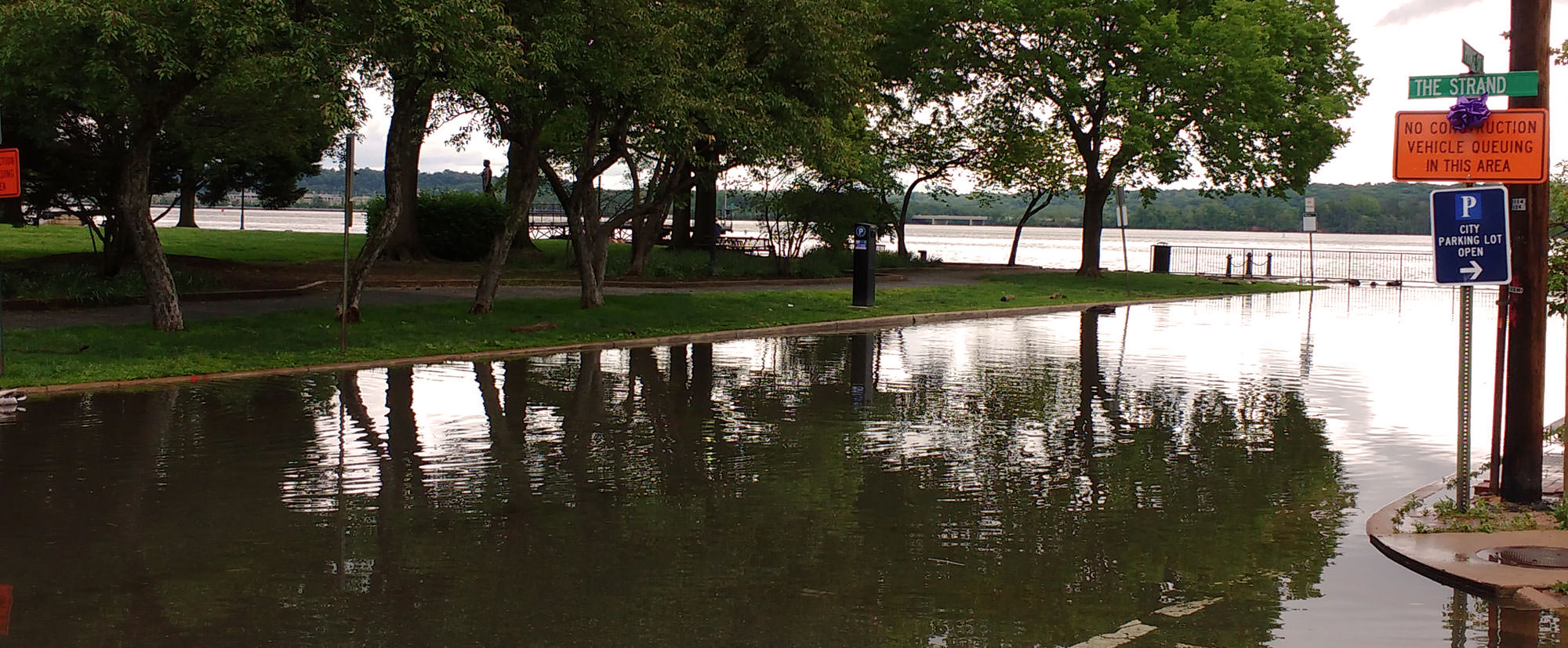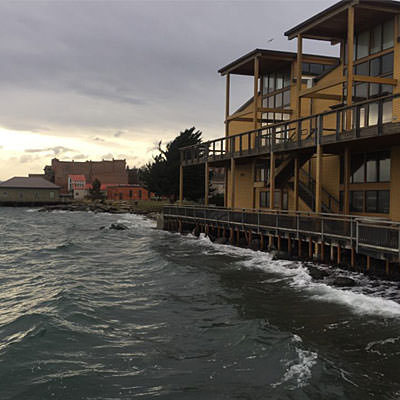High Tide Bulletin: Fall 2016
When you may experience higher than normal tides from September through November.
The rising and falling of the sea is a phenomenon upon which we can always depend. Tides are the regular rise and fall of the sea surface caused by the gravitational pull of the moon and sun and their position relative to the earth. There are some factors we can predict that cause the tides to be higher or lower than what is "normally" seen from day to day. This bulletin tells you when you may experience higher than normal high tides for September, October and November 2016.

This seasonal tide bulletins lets you know when you may experience higher than normal high tides. However, higher than normal high tides alone do not necessarily cause coastal flooding. Be aware that nuisance flooding is more likely to occur during these periods depending on your location along the coast. More severe flooding may also result if adverse weather conditions are present, such as heavy rains, strong wind, or big waves.
More Information
Search Our Posts
Get Social

Coastal Flooding in Alexandria, Virginia. NOAA's seasonal tide bulletins lets you know when you may experience higher than normal high tides. However, higher than normal high tides alone do not necessarily cause coastal flooding. Be aware that nuisance flooding is more likely to occur during these periods depending on your location along the coast. More severe flooding may also result if adverse weather conditions are present, such as heavy rains, strong wind, or big waves.
Northeast outlook
When will the tides be higher than normal?
- October 16 - 28, November 14 - 16
Why will they be higher than normal?
- A perigean spring tide will be occurring. This is when the moon is either new or full and closest to earth. Higher than normal high tides and lower than normal low tides will occur.
- Mean sea level is generally higher in the early fall months in the Mid Atlantic due to warmer, expanding ocean water and changes in weather patterns.
What kind of impact might I expect along the coast?
- Due to the topography of the northeast (less low lying areas), tidal flooding will generally not have a significant impact on the coast unless there is a severe storm.
Mid-Atlantic outlook
When will the tides be higher than normal?
- September 18-20, October 16-19, November 14-16
Why will they be higher than normal?
- A perigean spring tide will be occurring. This is when the moon is either new or full and closest to earth. Higher than normal high tides and lower than normal low tides will occur.
- Mean sea level is generally higher in the early fall months in the Mid Atlantic due to warmer, expanding ocean water and changes in weather patterns.
What kind of impact might I expect along the coast?
- Minor tidal flooding along the coast, especially in low-lying areas. If a storm occurs at this time, increased levels of tidal flooding and coastal erosion may occur. Lower than normal low tides will also occur.
Southeast outlook
When will the tides be higher than normal?
- September 18-20, October 15-20, November 13-17
Why will they be higher than normal?
- A perigean spring tide will be occurring. This is when the moon is either new or full and closest to earth. Higher than normal high tides and lower than normal low tides will occur.
- Mean sea level is generally higher in the fall in the Southeast due to changing weather patterns and a decrease in Gulf Stream transport.
What kind of impact might I expect along the coast?
- Minor tidal flooding along the coast, especially in low-lying areas. If a storm occurs at this time, increased levels of tidal flooding and coastal erosion may occur. Lower than normal low tides will also occur.
Gulf Coast outlook
When will the tides be higher than normal?
- In September, October, and November, the Gulf Coast water levels will not be significantly impacted by the Perigean Spring Tide.
Why won't they be impacted?
- In many locations of the Gulf Coast, the tidal range is relatively small compared to other regions of the U.S, so they will not be as significantly impacted by the perigean spring tide. However, in the fall, non-tidal impacts in the Gulf such as adverse weather may cause flooding.
West Coast outlook
When will the tides be higher than normal?
- October 17-18, November 13-17
Why will they be higher than normal?
- A perigean spring tide will be occurring. This is when the moon is either new or full and closest to earth, higher than normal high tides and lower than normal low tides will occur.
- Higher high tides occur on the West Coast in the late fall due to the increased angle of the sun relative to the Earth, which reaches a maximum during the Winter Solstice (December 21).
What kind of impact might I expect along the coast?
- Minor tidal flooding along the coast, especially in low-lying areas. If a local storm or large swell are present at this time, increased levels of tidal flooding and coastal erosion may occur. Lower than normal low tides will also occur.
Hawaii and the Pacific Islands outlook
When will the tides be higher than normal?
- November 14-17
Why will they be higher than normal?
- A perigean spring tide will be occurring. This is when the moon is either new or full and closest to earth. Higher than normal high tides and lower than normal low tides will occur.
- Higher high tides occur on Pacific Islands in the late fall due to the increased angle of the sun relative to the Earth, which reaches a maximum during the Winter Solstice (December 21).
What kind of impact might I expect along the coast?
- Minor tidal flooding along the coast, especially in low-lying areas. If a local storm or large swell are present at this time, increased levels of tidal flooding and coastal erosion may occur. Lower than normal low tides will also occur.
